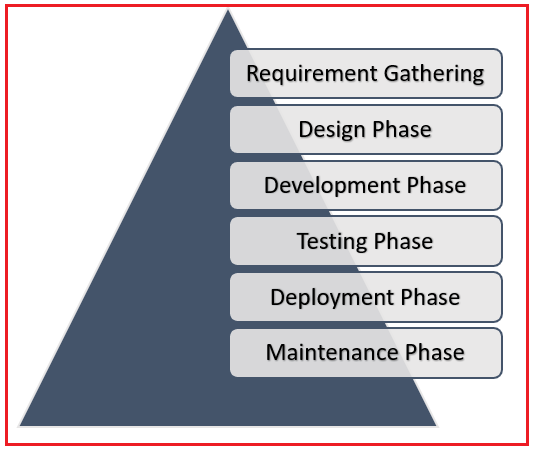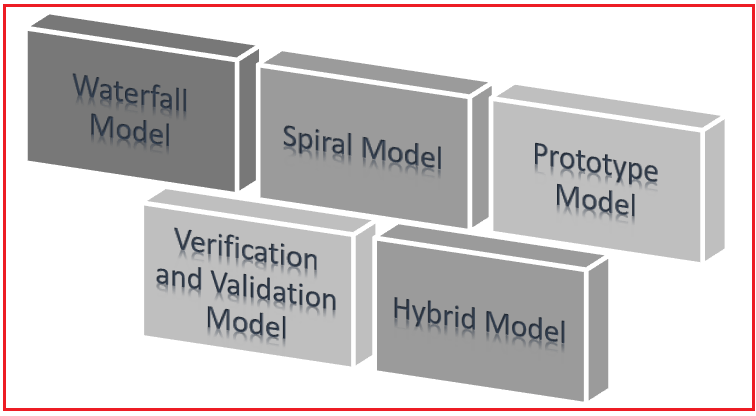Back to: Software Testing Tutorials
What is Software Development Life Cycle (SDLC)?
In this article, I am going to discuss What is Software Development Life Cycle (SDLC). Please read our previous article where we discussed What are Software Testing Principles.
What is Software Development Life Cycle (SDLC)?
The SDLC, or Software Development Life Cycle, is a structured method for directing the development and upkeep of high-quality software. It includes a number of stages, such as gathering requirements, designing the system, putting it into practice, testing it, deploying it, and maintaining it. Each phase includes particular objectives and tasks, ensuring a planned and managed development process. The SDLC enables the planning, execution, and achievement of the desired goals and quality standards for software projects. It encourages stakeholder cooperation, risk management, and effective communication, leading to successful and trustworthy software solutions.

Types of Phases in Software Development Life Cycle
It consists of several distinct phases, each serving a specific purpose. Let’s discuss each phase in detail.
Requirement Gathering Phase:
Project objectives are found, examined, and documented during the requirement phase of the Software Development Life Cycle (SDLC). It entails identifying system requirements, determining project scope, and gathering and comprehending user needs. Typically, stakeholders participate in seminars, surveys, and interviews to gather requirements. A clear and thorough specification document that acts as the basis for the development process is the result of this step. In order to effectively plan and carry out the future phases, the requirement phase makes sure that the development team and stakeholders have a clear knowledge of the project’s objectives, features, and restrictions. Making sure the program satisfies user needs is an essential stage. For instance, functionality like user registration, a product catalog, a shopping cart, and payment processing may be required for an e-commerce project. To elicit and clarify needs, the process frequently uses approaches including workshops, surveys, and interviews. The requirements are gathered to ensure a clear knowledge of what needs to be built and to serve as a basis for other phases like system design and development.
Design Phase:
In the Software Development Life Cycle (SDLC), the architecture, components, and interfaces of the system are planned and defined during the design phase. It entails creating a thorough implementation plan from the needs acquired in the preceding step. In the design phase, high-level and low-level designs are created, the structure of the system is established, suitable technologies are chosen, and data models and algorithms are defined. The design process seeks to guarantee that the system is scalable, maintainable, and dependable while also meeting the required objectives. It lays the groundwork for the development phase and aids in the understanding of the system’s construction and integration by developers. It focuses on drawing up a blueprint for the software system that specifies its design, functionality, and organizational structure. System design, database design, user interface design, and component design are typical tasks included in this phase. In the waterfall approach, for instance, the design phase would result in comprehensive design documents, such as architectural diagrams, data flow diagrams, and interface mock-ups, which serve as a roadmap for the following development phase. The software system is well-planned and prepared for installation thanks to the design process.
Development Phase:
The software product is created during the build/development phase of the Software Development Life Cycle (SDLC). Convert the design specifications into a usable system includes tasks like coding, testing, and integration. To make sure each component functions as intended, developers write and evaluate code, implement features, and run unit tests throughout this phase. The development phase is concerned with turning the design into workable code, ensuring coding standards are followed, and maintaining accurate documentation. In order to produce the intended software product, regular communication and collaboration between developers and stakeholders help handle any concerns, track progress, and make necessary improvements. To ensure the program satisfies the criteria, it must be designed, coded, and tested. Developers collaborate closely with stakeholders during this phase to comprehend their needs and translate them into useful software solutions. The building of a web application is an illustration of the development process. Programming languages like HTML, CSS, and JavaScript are used to write the code, which is then put to rigorous testing to find bugs and other problems before going on to the next stage. Developers also integrate features in accordance with design standards.
Testing Phase:
In the testing stage of the Software Development Life Cycle (SDLC), a software product’s functionality and quality are evaluated. It involves creating and running test cases to find errors and make sure the program complies with the requirements. Unit testing, integration testing, system testing, and acceptance testing are just a few of the several stages at which testing is done. Prior to the software being used, any problems should be found and corrected. Functional, performance, security, and usability testing activities can use both manual and automated methodologies. Delivering a solid and dependable software product to end customers is the ultimate objective. It guarantees that the program satisfies quality requirements and performs as planned. Many testing methodologies are used, including user acceptability testing, system testing, integration testing, and unit testing. For instance, during system testing for a web application development project, testers would check that all aspects of the website, such as form submissions, user authentication, and database interactions, functioned as intended. To ensure a dependable and positive user experience, they would also assess browser compatibility, responsiveness, and overall performance.
Deployment Phase:
The release and installation of the generated software into the production environment are part of the Software Development Life Cycle (SDLC)’s deployment phase. It entails tasks including creating deployment plans, setting up the necessary hardware and software infrastructure, testing for compatibility, and carrying out the deployment itself. This stage makes sure the software is properly installed and operating in the desired setting. Additionally, user training, data migration, and post-deployment support may be included. In order to allow customers to take advantage of the newly developed software, effective deployment strives to reduce disruptions and provide a seamless transition from development to production. It entails tasks including installing, configuring, and implementing software in the production environment. Consider the deployment of a web application as an example. The deployment of the application’s code to a web server, the configuration of the database, and the installation of any prerequisites are all done at this phase. Before making the application available to consumers, it is lastly checked to verify proper operation. The delivery of the program to the target users is ensured during the deployment phase to guarantee a smooth transition from development to production.
Maintenance Phase:
Software is routinely updated, improved, and mended during the maintenance phase of the Software Development Life Cycle (SDLC) to guarantee optimum performance and lifetime. It entails tasks like finding and fixing issues, putting user feedback into practice, enhancing system performance, and adjusting to new technologies. Corrective maintenance involves mending flaws, adaptive maintenance adjusts to changing requirements, perfective maintenance improves features, and preventive maintenance ensures future dependability. The objective is to maintain the functionality, usability, and security of the program over time, maximizing its use for users and minimizing interference with business activities. It entails tasks intended to find and solve bugs, respond to user comments, and update or improve the program as required. Corrective (bug fixes), adaptive (changes brought on by external circumstances), perfective (functional upgrades), or preventive (actions taken to avoid problems in the future) maintenance are the four types. For instance, following the app’s release, a mobile app developer can get user reports of crashes and performance concerns. In order to maintain the functionality and user pleasure of the app, they would analyze the reported issues, pinpoint the root causes, then create and release patches or updates to address those problems.
What are Software Development Life Cycle (SDLC) Models?
SDLC models- synthetic techniques or frameworks direct the creation of software applications from conception through deployment. These models give the software development process a structured and organized approach to be managed, ensuring effectiveness, quality, and timely delivery. There are numerous SDLC models that are often used, including:

Waterfall Model:
Using a linear and sequential methodology, the waterfall model ensures that each stage of the software development lifecycle—including requirements collecting, design, implementation, testing, deployment, and maintenance—is finished before moving on to the next. The waterfall model contains several phases, which are as follows:
- Analysis of requirements
- Design
- Coding
- Testing
- Installation
- Maintenance
- Feasibility research
Spiral Model:
The iterative and waterfall development models are combined in the spiral model. Adopting many iterations and incorporating feedback at each stage, emphasizes risk management. The planning, risk analysis, engineering, and evaluation phases make up each iteration. The spiral model’s several phases include the following:
- Requirement gathering
- Design
- Coding
- Testing
Prototype Model:
We choose this model because customer rejection is lower than it was with the former model when customer rejection was higher. Additionally, it enables us to create a sample (prototype) early on in the process, which we can then present to the client for approval before moving forward with the actual project. This model alludes to the process of developing the application’s prototype.
Verification and Validation Model:
It is the waterfall model in a more expansive form. It will be implemented in two phases: the verification process will be carried out in the first phase, and the validation process will be carried out once the application is ready. This model’s implementation takes place in a V shape, which implies that the validation process is finished in an upward flow while the verification process is carried out in a downward flow.
Hybrid Model:
When we need to combine the characteristics of two models into one, we use the hybrid model. Because it is simple to use and comprehend, this model can be used for small, medium, and big projects. The two models might be combined to create the following:
- Prototype and V
- Prototype and Spiral
Note: We will learn about these models in brief in our upcoming articles.
In the next article, I am going to discuss Types of Software Testing. Here, in this article, I try to explain what is Software Development Life Cycle (SDLC). I hope you enjoy this Software Development Life Cycle (SDLC) article.

